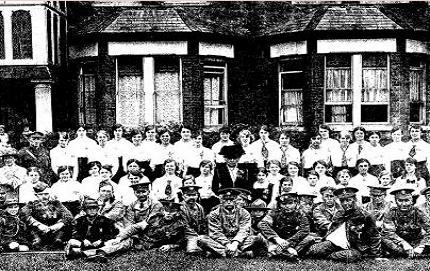There was fierce competition from several other girls' schools in the Folkestone area, and the de la Mares were always anxious to make a good impression on prospective parents who might be watching the Sunday afternoon walks along the Leas. The girls' uniforms were inspected before leaving the building to ensure they were smart and correctly worn. Then they could join the dozens of school 'crocodiles' in assorted colours walking among the top hats and trailing skirts of the elegant visitors. One of the boys' schools wore top hats, Eton suits and red carnations. The eastern limits of the walks were marked by the William Harvey statue, beyond which there was a risk of being contaminated by the east end of town.
Ruby Gordon recalled: "As the crocodiles passed and re-passed each other, scornful looks and impolite remarks were exchanged if the mistress in charge did not notice."
THE END OF AN ERA
One day during the summer holidays of 1922, Miss de la Mare taught for two hours in the morning and then took her great friend, Miss le Cocq, and a few holiday pupils to Hythe for tea in the open air. The next morning, 29 August, she made an early cup of tea for Miss Le Cocq, who was sleeping in her room, and returned to bed. Shortly afterwards, hearing a slight sound, Miss Le Cocq spoke to her and, receiving no reply, realised with a shock that Miss de la Mare had quietly died. As someone wrote in the booklet published to commemorate her death: "It seems fitting and beautiful that a life devoted to others should end on a note of personal service".
The Old Girls' Guild organised a fund for a memorial in Holy Trinity Church and invited subscriptions of 1/- or more. The result was a wooden carving placed beneath the reredos above the altar inscribed:
This pedestal together with the adjoining panels is offered to the Sanctuary
by The Old Girls of St Margaret's School to the Glory of God and in memory of
ELIZA DE LA MARE
Easter 1925


